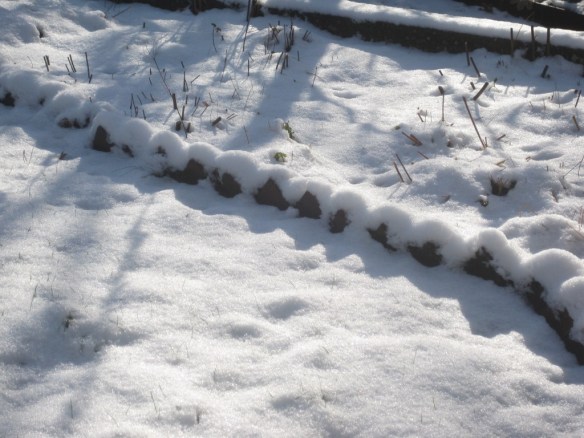While I’ve given myself a garden hall pass this month, it doesn’t mean I’ve stopped thinking about all matters of gardening. It’s been really nice to do the bare minimum in the garden as the weather has improved – gives one the freedom to bask in the sunshine without guilt. That’s a really rare thing as gardeners are perpetually filled with guilt because there is always and forever several things wanting attention. Having decisively given myself permission to take it easy has been liberating. It’s so much more fun to be amidst the plants and observe the goings on sans reservation.
However, the mind is always working. In a good way. By letting the garden sort of do its own thing, I see how it’s quite apparent that we gardeners, need to reset our artistic expectations of our gardens. Rather than wielding a strict hand on the aesthetics, we must loosen up to work more with nature and changing climate. Our gardens should reflect an awareness of environmental and sustainable requirements, be sympathetic to the needs and habits of native flora and fauna.
I’ve often referred to my meadow as an area of controlled chaos. This is primarily because the native plants have a tendency to look wild as they are let to self-seed and edited only when a plant is trying to overpopulate itself in a thuggish manner. With the knowledge that the fittest, the ones most suited to the conditions offered here do best, I learn from the plants. As much as I might desire a more varied array of natives, and I’m willing to trial them all, I have learned to acquiesce to the workings of nature. What thrives supports a happy number of pollinators and is an ecologically beneficial environment. That is after all the whole point of what I have attempted.
On the other hand, I had originally designed the beds in the front garden to be more traditional – tidier and charming like a cottage garden. More in keeping with what might be universally appreciated by viewers from the street. This is pretty much still true through spring when the bulbs are the principal players. However, over the years, I have replaced the more demanding/cantankerous yet popular summer perennials with natives. I did so for two reasons – one was that the native plants are hardy, reliable and low maintenance. The other was to give a visitor a preview of what is to come as they gradually make their way to the meadow in the far back. Design-wise, it provided continuity instead of giving the garden a split personality. Consequently, the beds take on a wild look in summer and fall. But how they hum, buzz and flutter with pollinators! There is so much more life and movement than ever before.
Both, the front beds as well as the meadow don’t require watering except in times of severe dry spells. A dose of compost and cedar mulch keeps the front beds relatively weed free and helps the soil retain moisture longer. The meadow requires no such applications whatsoever. All in all, so much better for the environment as well as the gardener.
It’s true that many perennials peter out early. This point occurred to me every year until more recently I accepted that I must use annuals to fill in those gaps of color in certain places like the terrace and around the side porch. This is no different from the window-boxes and pots that are filled with annuals to pep up the aesthetics.
Keep in mind, those perennials that have finished blooming, continue to serve. The seed heads ripen and feed the birds and other creatures as they prepare for the cold season ahead. In addition, their intricate designs and shapes have inspired me to paint them. I have a wonderful series going!
Ultimately, the looser, wilder native plantings, respond best to the dire calls for longevity, sustainability and sound ecology while still looking beautiful. It really is time to reconsider our gardens and adapt our design sensibilities accordingly. A shift in mindset makes us winners all around.
Fall is a good time for planting native perennials – get cracking!
Note: Last Saturday, I visited the gardens at Hay Honey Farm in New Jersey. I was thrilled to see that they too have a meadow similar to mine and even the other borders have the same natural sensibilities as mine. Except, theirs are far more extensive and better maintained!
My wild show: One gardener’s paradise and anothers hell?!
(c) 2021 Shobha Vanchiswar
[do_widget “Blog Subscriptions (Jetpack)”]


























































































